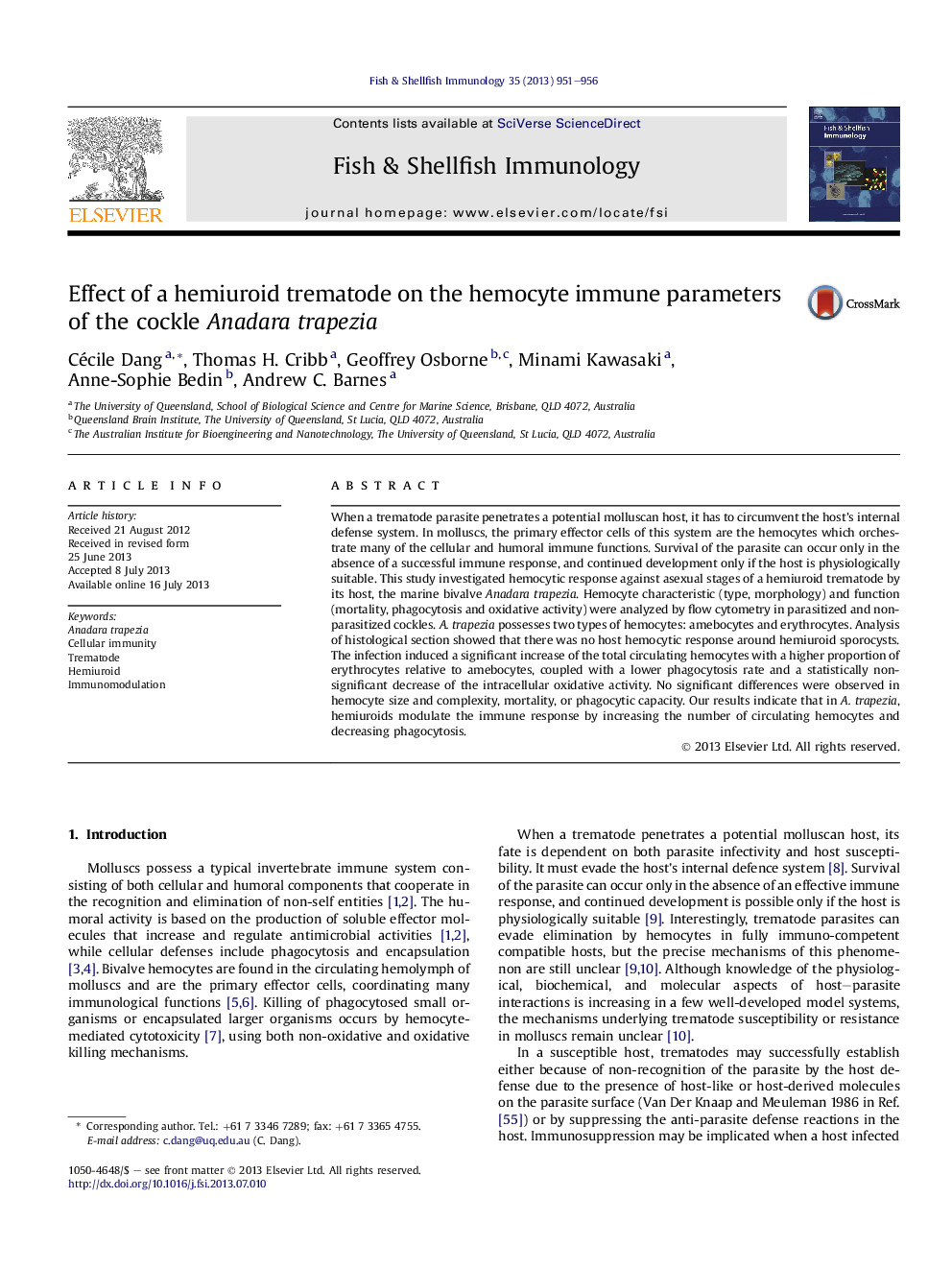| Article ID | Journal | Published Year | Pages | File Type |
|---|---|---|---|---|
| 10972069 | Fish & Shellfish Immunology | 2013 | 6 Pages |
Abstract
When a trematode parasite penetrates a potential molluscan host, it has to circumvent the host's internal defense system. In molluscs, the primary effector cells of this system are the hemocytes which orchestrate many of the cellular and humoral immune functions. Survival of the parasite can occur only in the absence of a successful immune response, and continued development only if the host is physiologically suitable. This study investigated hemocytic response against asexual stages of a hemiuroid trematode by its host, the marine bivalve Anadara trapezia. Hemocyte characteristic (type, morphology) and function (mortality, phagocytosis and oxidative activity) were analyzed by flow cytometry in parasitized and non-parasitized cockles. A. trapezia possesses two types of hemocytes: amebocytes and erythrocytes. Analysis of histological section showed that there was no host hemocytic response around hemiuroid sporocysts. The infection induced a significant increase of the total circulating hemocytes with a higher proportion of erythrocytes relative to amebocytes, coupled with a lower phagocytosis rate and a statistically non-significant decrease of the intracellular oxidative activity. No significant differences were observed in hemocyte size and complexity, mortality, or phagocytic capacity. Our results indicate that in A. trapezia, hemiuroids modulate the immune response by increasing the number of circulating hemocytes and decreasing phagocytosis.
Related Topics
Life Sciences
Agricultural and Biological Sciences
Aquatic Science
Authors
Cécile Dang, Thomas H. Cribb, Geoffrey Osborne, Minami Kawasaki, Anne-Sophie Bedin, Andrew C. Barnes,
